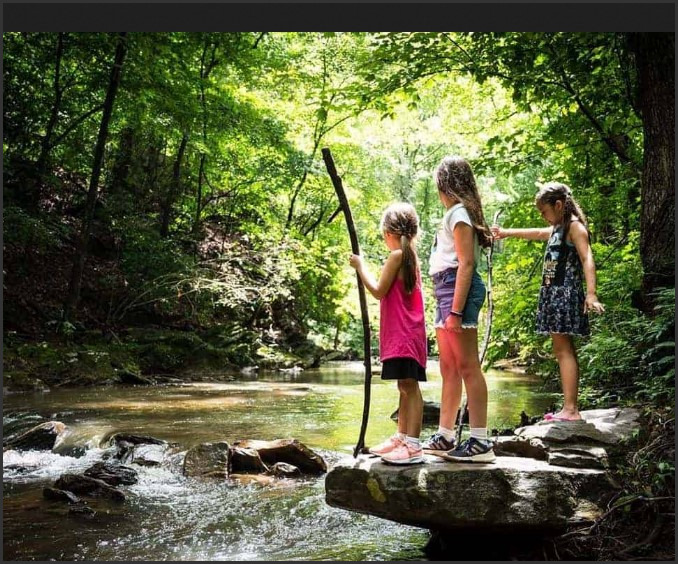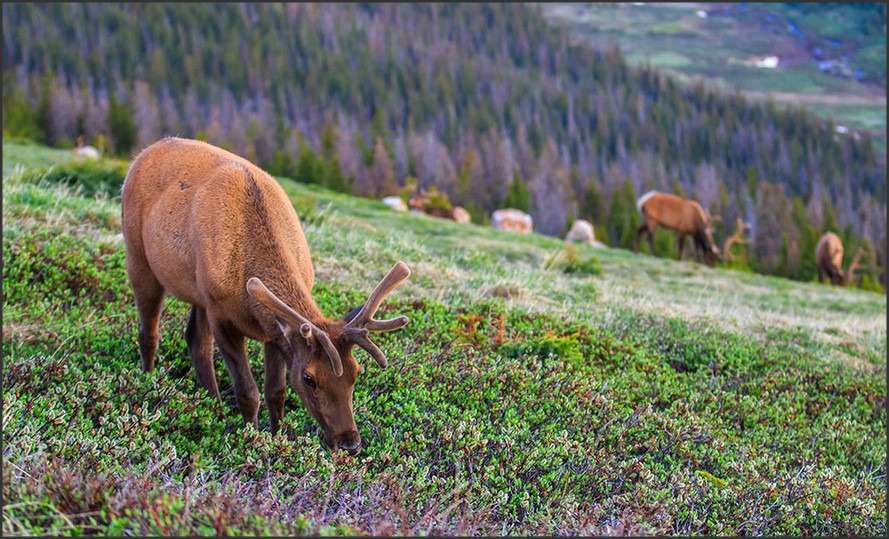Category Archives: Outdoors
Outdoor Adventures for All Ages: Family-Friendly Activities in Nature

Source: runwildmychild.com
Exploring the Great Outdoors: Tips for Planning a Fun and Safe Adventure for All Ages
Exploring the great outdoors is a wonderful way to spend time with family and friends. Whether you’re planning a day trip or a longer excursion, there are a few tips to keep in mind to ensure a fun and safe adventure for all ages.
First, it’s important to plan ahead. Research the area you’ll be visiting and familiarize yourself with the terrain, weather conditions, and any potential hazards. Make sure to check for any restrictions or permits that may be required. Also, be sure to bring the necessary supplies, such as food, water, and first aid supplies.
Second, dress appropriately for the weather and terrain. Wear layers of clothing to stay warm and dry, and wear sturdy shoes with good traction. Bring a hat, sunglasses, and sunscreen to protect yourself from the sun.
Third, be aware of your surroundings. Pay attention to any potential hazards, such as steep cliffs, slippery rocks, or wild animals. If you’re hiking, stay on the designated trails and be aware of your footing.
Fourth, stay together. Make sure everyone in your group is aware of the plan and sticks together. If you’re separated, make sure to have a designated meeting spot.
Finally, be prepared for emergencies. Bring a first aid kit and a cell phone with a fully charged battery. Make sure to have a plan in place in case of an emergency.
By following these tips, you can ensure a fun and safe adventure for all ages. With a little bit of planning and preparation, you can make the most of your time outdoors and create lasting memories.
Making the Most of Nature: Ideas for Outdoor Activities for All Ages and Abilities
Outdoor activities are a great way to enjoy nature and get some exercise. Whether you’re looking for something to do with the whole family or just a few friends, there are plenty of activities that can be enjoyed by people of all ages and abilities. Here are some ideas to get you started.
Hiking: Hiking is a great way to explore nature and get some exercise. There are trails of all levels of difficulty, so you can find one that’s suitable for everyone. Make sure to bring plenty of water and snacks, and wear appropriate clothing and footwear.
Camping: Camping is a great way to get away from it all and enjoy the outdoors. You can camp in a tent, RV, or cabin, depending on your preference. Make sure to bring all the necessary supplies, such as food, water, and camping gear.
Fishing: Fishing is a great way to relax and enjoy nature. You can fish from a boat, pier, or shoreline. Make sure to bring the necessary supplies, such as bait, tackle, and a fishing license.
Birdwatching: Birdwatching is a great way to observe nature and learn about different species of birds. Make sure to bring binoculars and a bird guide to help you identify the birds you see.
Geocaching: Geocaching is a great way to explore nature and have some fun. You can use a GPS device to find hidden caches in the area. Make sure to bring a pen and paper to record your finds.
Kayaking: Kayaking is a great way to explore rivers and lakes. Make sure to bring the necessary safety equipment, such as a life jacket and whistle.
These are just a few ideas for outdoor activities that can be enjoyed by people of all ages and abilities. With a little bit of planning and preparation, you can make the most of nature and have a great time.
Wildlife Encounters: Connecting with Animals on Outdoor Adventures

Source: livability.com
Exploring the Benefits of Wildlife Encounters: How Connecting with Animals Can Enhance Your Outdoor Adventures
Wildlife encounters can be some of the most rewarding experiences of outdoor adventures. Connecting with animals in their natural habitats can be a powerful and transformative experience, providing a unique opportunity to observe and appreciate the beauty of nature. From the majestic sight of a soaring eagle to the playful antics of a curious squirrel, wildlife encounters can bring a sense of awe and wonder to any outdoor adventure.
The benefits of wildlife encounters extend far beyond the visual. Studies have shown that spending time in nature can reduce stress, improve mental health, and even boost creativity. Connecting with animals can also help to foster a sense of appreciation and respect for the natural world. By observing animals in their natural habitats, we can gain a better understanding of the importance of conservation and the need to protect our planet’s precious resources.
In addition to the mental and emotional benefits, wildlife encounters can also provide physical benefits. Spending time outdoors can help to improve physical fitness, as well as provide an opportunity to learn about the local flora and fauna. Exploring the outdoors can also help to build confidence and self-esteem, as well as provide a sense of accomplishment.
Wildlife encounters can be enjoyed in a variety of ways. From bird watching to wildlife photography, there are many ways to observe and appreciate the beauty of nature. For those who are looking for a more hands-on experience, there are also opportunities to volunteer with wildlife rehabilitation centers or participate in wildlife research projects.
No matter how you choose to experience wildlife encounters, the benefits are undeniable. Connecting with animals in their natural habitats can be a powerful and transformative experience, providing a unique opportunity to observe and appreciate the beauty of nature. By taking the time to explore the outdoors and connect with wildlife, we can gain a better understanding of the importance of conservation and the need to protect our planet’s precious resources.
Tips for Responsible Wildlife Encounters: How to Respectfully Interact with Animals on Your Outdoor Adventures
1. Respect the animal’s space: When you encounter wildlife, it is important to remember that you are in their home. Respect their space and do not approach them too closely.
2. Keep your distance: It is important to keep a safe distance from the animal. Do not attempt to touch or feed the animal.
3. Be aware of your surroundings: Pay attention to your surroundings and be aware of any potential dangers. Be aware of the animal’s behavior and look for signs of distress.
4. Do not disturb the animal’s habitat: Do not disturb the animal’s habitat or disrupt their natural behavior.
5. Do not litter: Do not leave any trash or food behind. This can attract animals and put them in danger.
6. Follow the rules: Follow any local laws or regulations regarding wildlife encounters.
7. Be respectful: Respect the animal’s right to exist and do not harass them.
8. Educate yourself: Learn about the animal’s behavior and habitat before you encounter them.
9. Be prepared: Bring the necessary supplies and equipment for a safe and respectful encounter.
10. Leave no trace: Leave the area as you found it and do not disturb the animal’s habitat.
Into the Wild: Embracing Nature in All Its Glory
Exploring the Benefits of Living a Life of Simplicity: Examining the Impact of Into the Wild
Living a life of simplicity is a concept that has been gaining traction in recent years, as more and more people are looking to reduce their material possessions and focus on the things that truly matter. This idea has been explored in the 2007 film Into the Wild, which follows the story of Christopher McCandless, a young man who abandons his possessions and sets out on a journey of self-discovery. The film serves as an exploration of the benefits of living a life of simplicity, and it is worth examining the impact that it has had on viewers.
The most obvious benefit of living a life of simplicity is the reduction of stress and anxiety. By reducing the amount of material possessions that one has, it is easier to focus on the things that truly matter, such as relationships, experiences, and personal growth. This can lead to a greater sense of contentment and peace of mind, as one is no longer weighed down by the burden of material possessions.
Another benefit of living a life of simplicity is the increased freedom that it provides. By reducing the amount of possessions that one has, it is easier to move around and explore the world. This can lead to a greater appreciation of the world around us, as well as a greater sense of adventure and exploration.
Finally, living a life of simplicity can lead to a greater sense of connection with nature. By reducing the amount of material possessions that one has, it is easier to appreciate the beauty of the natural world and to connect with it on a deeper level. This can lead to a greater sense of peace and contentment, as well as a greater appreciation of the world around us.
In conclusion, Into the Wild serves as an exploration of the benefits of living a life of simplicity. By reducing the amount of material possessions that one has, it is easier to focus on the things that truly matter, such as relationships, experiences, and personal growth. This can lead to a greater sense of contentment and peace of mind, as well as increased freedom and a greater connection with nature.
The Power of Nature: How Into the Wild Inspires Us to Connect with the Natural World
The 2007 film Into the Wild, directed by Sean Penn, tells the story of Christopher McCandless, a young man who abandons his comfortable life to embark on a journey of self-discovery in the Alaskan wilderness. While the film has been met with both critical and commercial success, it has also inspired many viewers to explore and connect with the natural world. This is due to the power of nature that is so vividly portrayed in the film.
The beauty of nature is a major theme in Into the Wild. From the majestic mountains of Alaska to the vast deserts of the American Southwest, the film captures the awe-inspiring beauty of the natural world. The stunning visuals of the film serve to remind viewers of the power of nature and its ability to captivate and inspire.
The film also conveys the importance of connecting with nature. Christopher McCandless’ journey is a testament to the power of nature to provide solace and peace. His time in the wilderness allows him to reflect on his life and find a sense of purpose. By immersing himself in nature, he is able to gain a greater understanding of himself and the world around him.
The power of nature is also evident in the film’s soundtrack. The music, composed by Eddie Vedder, is a perfect accompaniment to the visuals of the film. The music serves to further emphasize the beauty and power of nature, and it helps to create an emotional connection between the viewer and the natural world.
Into the Wild is a powerful reminder of the importance of connecting with nature. The film’s stunning visuals, emotional soundtrack, and inspiring story serve to remind viewers of the power of nature and its ability to provide solace and peace. By connecting with nature, we can gain a greater understanding of ourselves and the world around us.





